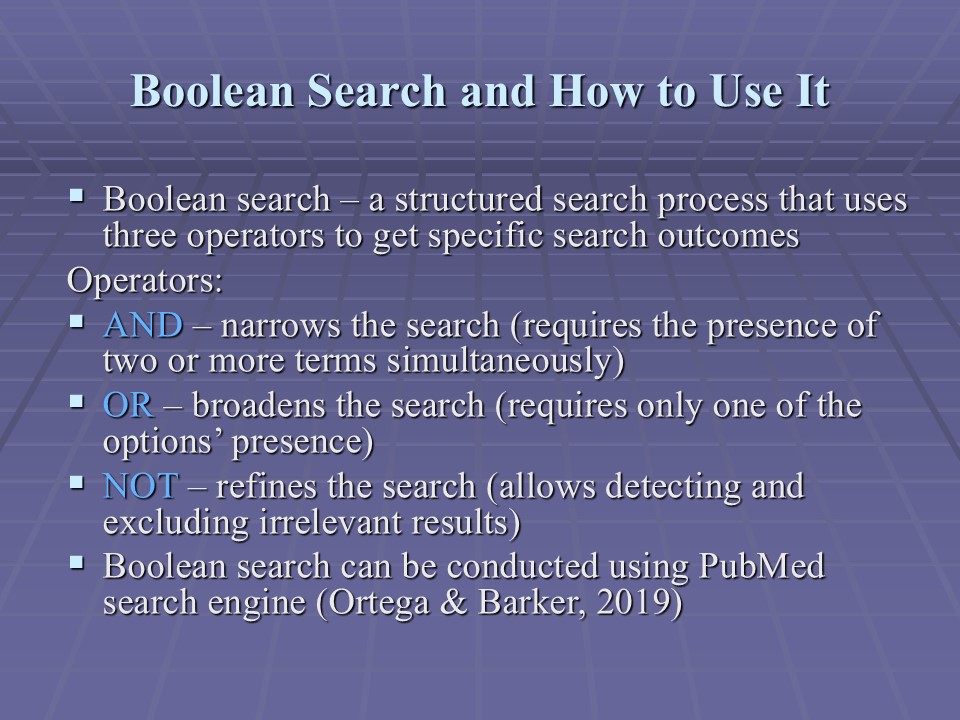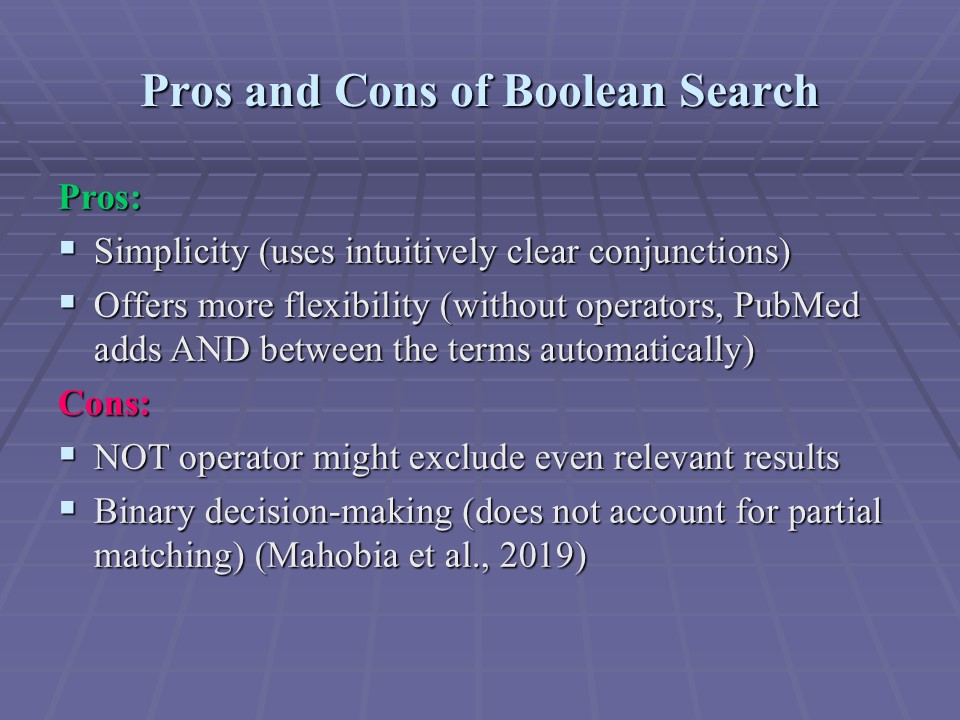- Boolean search – a structured search process that uses three operators to get specific search outcomes.
Operators:
- AND – narrows the search (requires the presence of two or more terms simultaneously).
- OR – broadens the search (requires only one of the options’ presence).
- NOT – refines the search (allows detecting and excluding irrelevant results).
- Boolean search can be conducted using PubMed search engine (Ortega & Barker, 2019).

How to Use Boolean Search
- Topic: oscillating-rotating toothbrushes and their benefits over manual toothbrushes in gingivitis patients.
This screenshot illustrates the literature search process undertaken for my project about the comparative benefits of oscillating-rotating over manual toothbrushes for those with gingivitis. The Boolean search string might look complex, but it can be easily broken down into four parts. These parts represent four elements of the PICO question of interest – AND operators between them ensure the presence of all elements in search results, and OR operators are applied to consider common synonyms.

- 1726 results for manual processing (another search string is required).
The use of the created Boolean string yields 1726 results, which is a relatively large number of articles for manual selection of the most relevant sources. The first results seem to be irrelevant to the topic of interest. In this situation, it is essential to simplify and shorten the search string, as well as place accents in a specific way to narrow down the search.

- Not too many synonyms.
- Reduced use of OR.
- Critical terms in quotation marks.
Here is an example of another Boolean string that can offer more specific results. Firstly, unnecessary synonyms that do not benefit the search have been removed. Secondly, the topic focuses on a very specific toothbrush technology – placing the term “Oscillating-rotating toothbrush” in quotation marks will increase the results’ relevance. The search string still contains elements pertaining to population, intervention, outcome, and comparison but looks less sophisticated.

- More relevant search results.
As a result of these manipulations with key terms and operators, the number of search results (60) allows for manual selection. One of the quoted phrases was not found, but its synonym worked, which resulted in locating a perfectly relevant study by Grender and colleagues and other sources.

Pros and Cons of Boolean Search
- Pros:
- Simplicity (uses intuitively clear conjunctions),
- Offers more flexibility (without operators, PubMed adds AND between the terms automatically).
- Cons:
- NOT operator might exclude even relevant results,
- Binary decision-making (does not account for partial matching) (Mahobia et al., 2019).

References
Mahobia, A., Vyas, S., & Deshmukh, S. (2019). PubMed search: How to get optimum results? The Official Scientific Journal of Delhi Ophthalmological Society, 29(4), 17-21. Web.
Ortega, M., & Barker, J. (2019). Finding the evidence. In P. Linsley, R. Kane, & J. Barker (Eds.), Evidence-based practice for nurses and healthcare professionals (4th ed., pp. 67-89). Sage Publications Ltd.